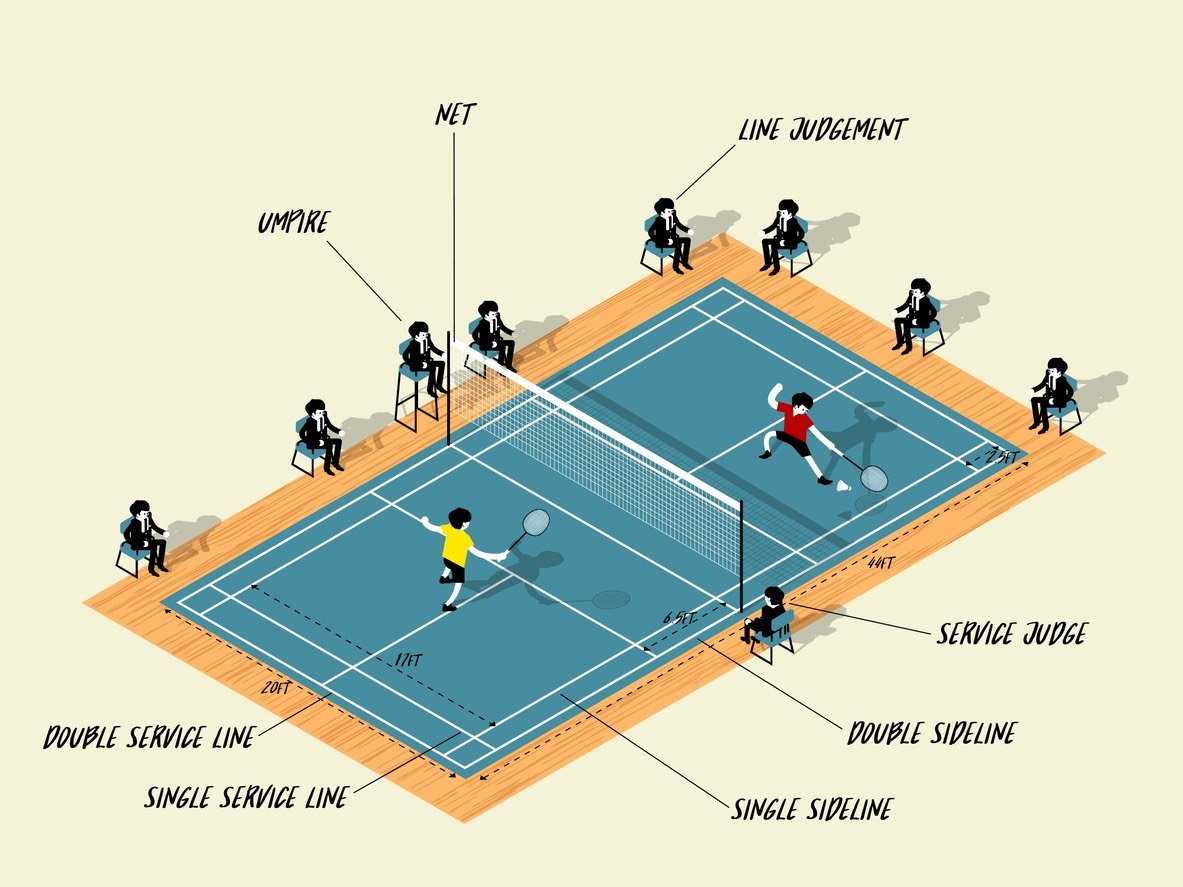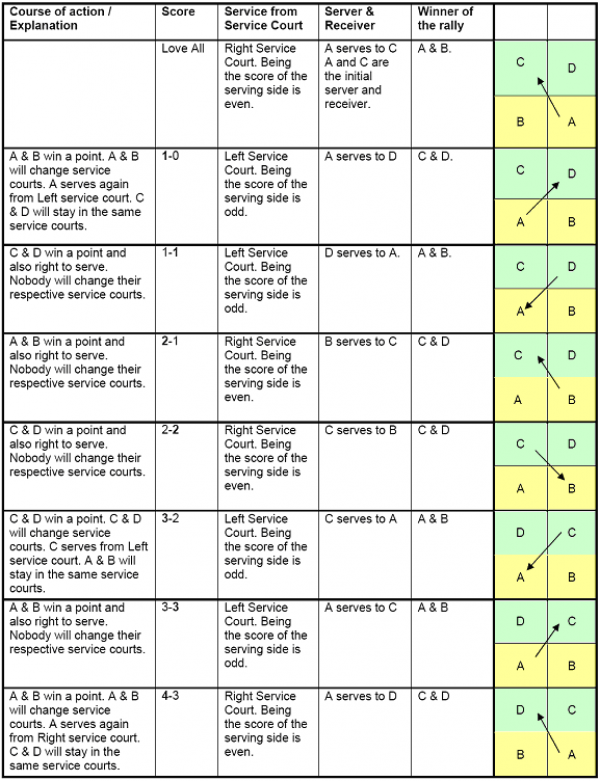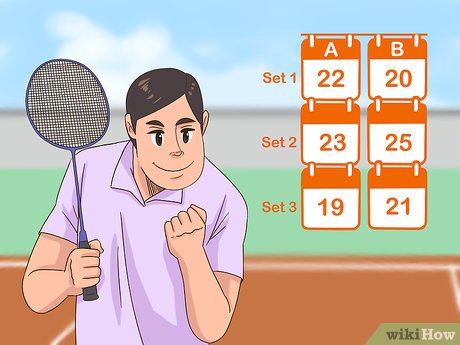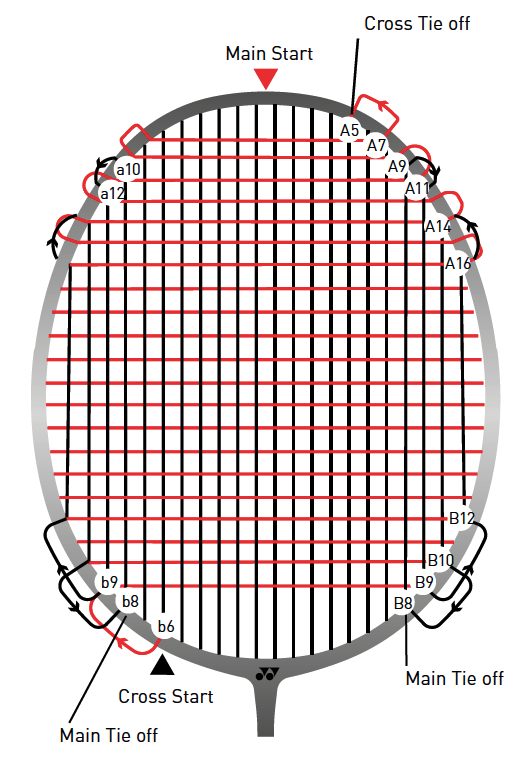To win a game of badminton, a player needs to score 21 points. Each match consists of the best of three games.
Badminton is an exciting and fast-paced sport. Understanding the scoring system can help you enjoy it even more. The game follows a simple yet strategic point system. By knowing how many points to aim for, you can play smarter and better.
Whether you’re a beginner or looking to improve, understanding the rules is key. This introduction will guide you through the basics of scoring in badminton. Let’s dive in and learn how you can rack up those points to win!

Credit: keepthescore.com
Introduction To Badminton Scoring
Understanding the scoring system in badminton is essential for both players and enthusiasts. This guide will help you grasp the basics of how many points are needed to win a badminton match. We will delve into the history and rules of badminton scoring.
Brief History
Badminton’s origins trace back to ancient civilizations in Europe and Asia. The modern version of the game was developed in England in the 19th century. Initially, different versions of scoring existed. In 2006, the Badminton World Federation (BWF) standardized the scoring system. This change made the game faster and more exciting.
Basic Rules
Badminton matches are typically played best of three games. Each game is played to 21 points. A player or team must win by at least two points. If the score reaches 20-20, the game continues until a player or team leads by two points. The maximum score for a game is 30 points. If the score reaches 29-29, the next point wins.
Here is a quick overview of the basic rules:
- Games are played to 21 points.
- You must win by at least two points.
- The maximum score is 30 points.
The server must serve diagonally across the court. The serve must be below the waist and hit upwards. Only the serving side can score points. If the serving side wins a rally, they score a point and serve again. If the receiving side wins, they become the new server.

Credit: www.wikihow.com
Standard Scoring System
The standard scoring system in badminton is designed to make matches fair and competitive. This system ensures that each player or team has an equal opportunity to win points and the game. Understanding this scoring system is essential for both beginners and experienced players. Below, we’ll delve into the specifics of the 21-point format and what it takes to win a game.
21-point Format
Badminton matches are played in a best-of-three format. Each game is played to 21 points. Players score a point when they win a rally. The first player or team to reach 21 points wins the game. If the score reaches 20-20, the game continues until one player or team has a two-point lead.
For example:
| Player 1 | Player 2 |
|---|---|
| 21 | 19 |
| 22 | 20 |
This table shows Player 1 winning the game with a two-point lead. The game ends at 21-19 or 22-20. This ensures a clear winner in every game.
Winning A Game
To win a game, a player or team must have a lead of at least two points. This rule applies even if the score exceeds 21 points. Matches are usually best of three games. So, winning two games secures the match. Consistency and focus are key in achieving this.
- Reach 21 points first.
- Maintain a two-point lead.
- Win two out of three games to secure the match.
Understanding these basics will help you play better and enjoy the game more. The standard scoring system is simple, yet it adds excitement and fairness to every match.
Alternative Scoring Formats
In badminton, the standard scoring system is well-known. However, there are alternative scoring formats that can make the game more exciting. These formats are often used in different regions or for special tournaments. Here, we explore two popular alternative scoring formats: the 15-Point Format and the 11-Point Format.
15-point Format
The 15-Point Format is one of the traditional ways to score in badminton. It has been used for many years in various tournaments and casual games.
- Each game is played to 15 points.
- A player must win by at least 2 points.
- If the score reaches 14-14, the game continues until one player leads by 2 points.
This format is often preferred for its longer rallies and strategic play. Players need to be consistent and patient to win.
11-point Format
The 11-Point Format is shorter and faster-paced. It is popular in some recreational settings and training sessions.
- Each game is played to 11 points.
- Players need to win by at least 2 points, similar to the 15-point format.
- If the score reaches 10-10, the game continues until one player leads by 2 points.
This format can make matches more intense and exciting. It requires players to be quick and sharp from the start.
Both the 15-Point and 11-Point formats offer unique challenges and benefits. Choosing the right format can depend on the players’ preferences and the context of the match.
Scoring In Singles Vs. Doubles
Badminton is a game of skill and strategy. Understanding the scoring system is key to enjoying and excelling in the sport. The rules for scoring in singles and doubles have distinct differences. Knowing these can help you play better and more confidently.
Singles Rules
In singles, each player aims to reach 21 points to win a game. The player must lead by at least 2 points. If the score reaches 20-20, the game continues until one player leads by 2 points. The first player to win two games wins the match. Each player serves from the right side when their score is even. They serve from the left when their score is odd.
Doubles Rules
Doubles scoring follows the same point system as singles. Each pair aims to score 21 points and must win by 2 points. If the score is 20-20, the game continues until one side leads by 2 points. In doubles, players rotate their service courts based on their scores. The serving side changes only after winning a point. This keeps the game dynamic and fast-paced.
Tie-break Situations
In badminton, understanding tie-break situations can enhance your game. These situations occur when both players or teams are close in score. Knowing the rules can help you navigate these tense moments effectively.
Deuce Rules
A deuce in badminton happens when both players or teams reach 20 points each. This means the score is tied at 20-20. At this point, the game continues until one side gains a two-point lead. For example, if the score is 22-20, the player with 22 points wins. This rule applies to both singles and doubles matches.
Here’s a quick summary of deuce rules:
- Game tied at 20-20.
- Play continues until a two-point lead is achieved.
- Applies to both singles and doubles.
Setting The Score
In some cases, players may need to set the score during a tie-break. This happens when the score reaches 29-29. The next point wins the game, making it a sudden-death situation.
Key points about setting the score:
- Occurs at 29-29.
- Next point wins the game.
- Applies to both singles and doubles.
Understanding these rules can give you an edge during crucial moments. Stay focused and remember these guidelines to improve your chances of winning.

Credit: londonbadminton.weebly.com
Scoring Strategies
Understanding scoring strategies in badminton can enhance your gameplay. Knowing how to score can give you an edge over your opponent. Whether you focus on offense or defense, both tactics are crucial. Let’s dive into the key strategies.
Offensive Tactics
Offensive tactics are about attacking your opponent’s weaknesses. Use powerful smashes to force errors. Aim for the corners to make your opponent move. Quick net shots can catch them off guard. Maintain a fast pace to keep them on the defensive. Vary your shots to keep them guessing.
Defensive Tactics
Defensive tactics focus on outlasting your opponent. Stay calm and return every shot. Use high clears to give yourself time. Position yourself well to cover the court. Anticipate your opponent’s moves to gain an advantage. Consistency is key in defense.
Common Mistakes In Scoring
Scoring in badminton can be tricky for beginners. Many players make common mistakes. These errors can change the outcome of the game. Knowing these mistakes helps in avoiding them. Let’s explore some frequent errors in scoring.
Faults And Fouls
Faults and fouls are common in badminton. A fault happens when a player breaks a rule. For example, hitting the shuttlecock out of bounds is a fault. Double hitting the shuttlecock is another fault. Fouls involve more serious infractions. A foul could be an illegal serve. Knowing the difference helps players score correctly.
Misinterpretations
Many players misinterpret scoring rules. For instance, not knowing when to change sides can cause confusion. Another common error is misunderstanding the serve rotation. Players must serve from the correct side. Missing these details can lead to wrong scores. Understanding the rules clearly is essential for fair play.
Tips For Keeping Score
Keeping score in badminton can be challenging, but it’s crucial for fair play. Knowing the correct way to record and track points helps maintain an accurate game. Here are some effective tips to keep score easily and accurately.
Using Score Sheets
Score sheets are a traditional and reliable method for tracking points in badminton. They help players stay organized and ensure no points are missed. Here’s how to use score sheets effectively:
- Print a score sheet template before the game starts.
- Assign one player or an official to record the points.
- After each rally, mark the points for the winning player or team.
- Use clear and consistent symbols to avoid confusion.
Score sheets can be kept simple. Below is an example of a basic score sheet layout:
| Player | Game 1 | Game 2 | Game 3 |
|---|---|---|---|
| Player A | 21 | 19 | 15 |
| Player B | 18 | 21 | 21 |
Digital Tools
Digital tools offer a modern solution for keeping score in badminton. They can simplify the process and add convenience. Some popular digital tools include:
- Mobile Apps: Several apps are designed specifically for badminton scoring. These apps often come with additional features like match statistics and history.
- Online Scoreboards: Websites and online platforms provide interactive scoreboards. These can be used on any device with internet access.
- Smart Watches: Some smartwatches offer sports tracking features, including badminton scoring. They are easy to use and offer real-time updates.
Using digital tools can make the game more enjoyable and less stressful. They offer accuracy and ease of use, ensuring you never miss a point.
Frequently Asked Questions
How Many Points To Win A Badminton Game?
A badminton game is won by the first player or team to reach 21 points. You need a 2-point lead.
What Is The Maximum Points In Badminton?
The maximum points in a badminton game is 30. If the score reaches 29-29, the next point wins.
How Many Sets To Win In Badminton?
To win a badminton match, a player or team must win two out of three sets. Each set is played to 21 points.
What Happens At 20-20 In Badminton?
At 20-20, a player or team must win by 2 points. The game continues until one side achieves a 2-point lead.
Conclusion
Winning a badminton match requires skill and strategy. Understanding the point system is key. Matches are played to the best of three games. Each game needs 21 points to win, with at least a two-point lead. This knowledge helps players plan their game better.
Practice consistently and focus on scoring. Enjoy playing and keep honing your skills. Remember, every point counts. With determination and effort, you’ll improve. Now, go out and play your best game. Happy playing!



